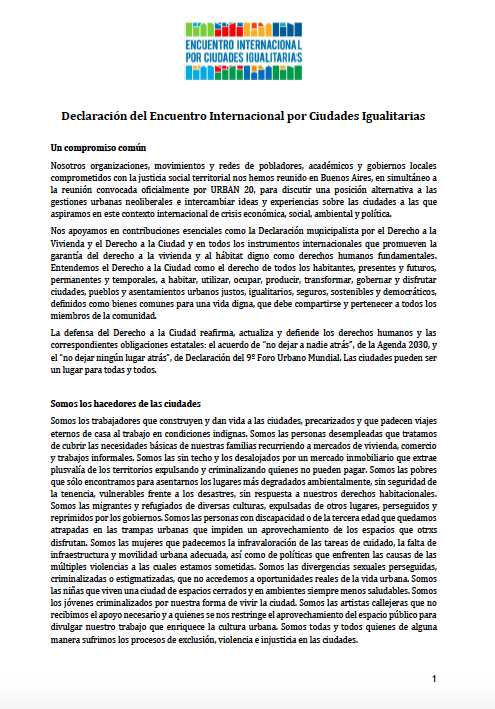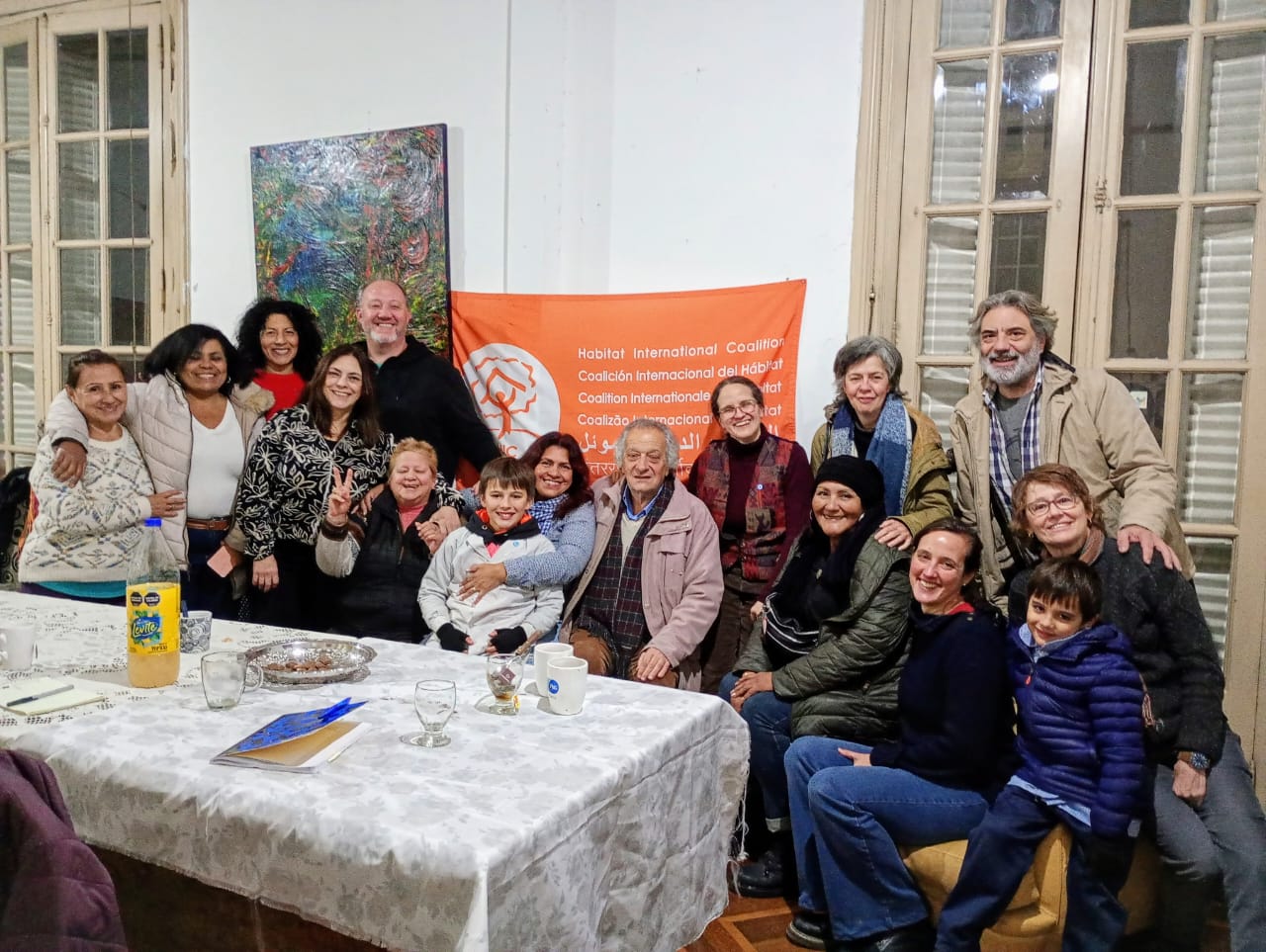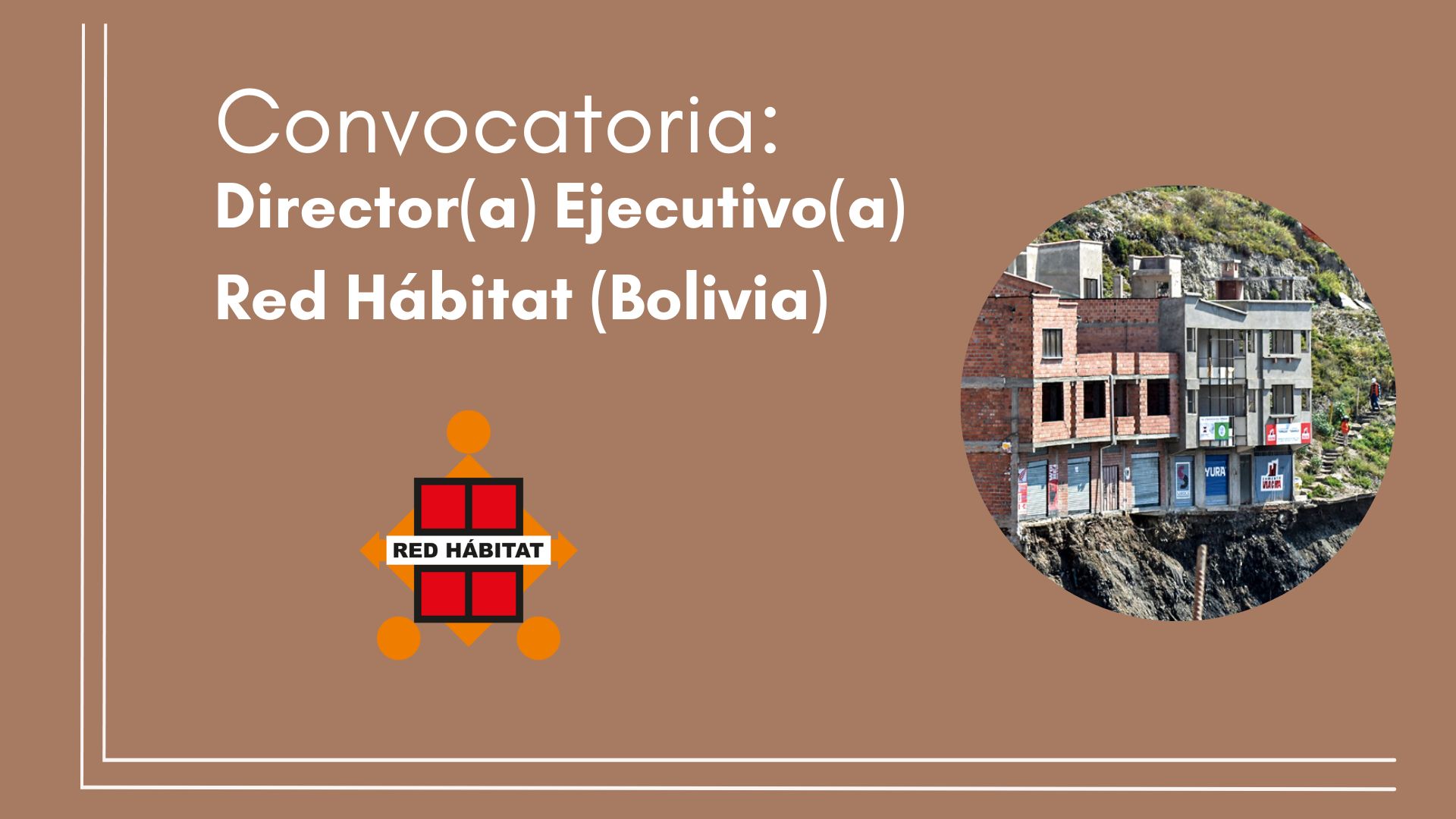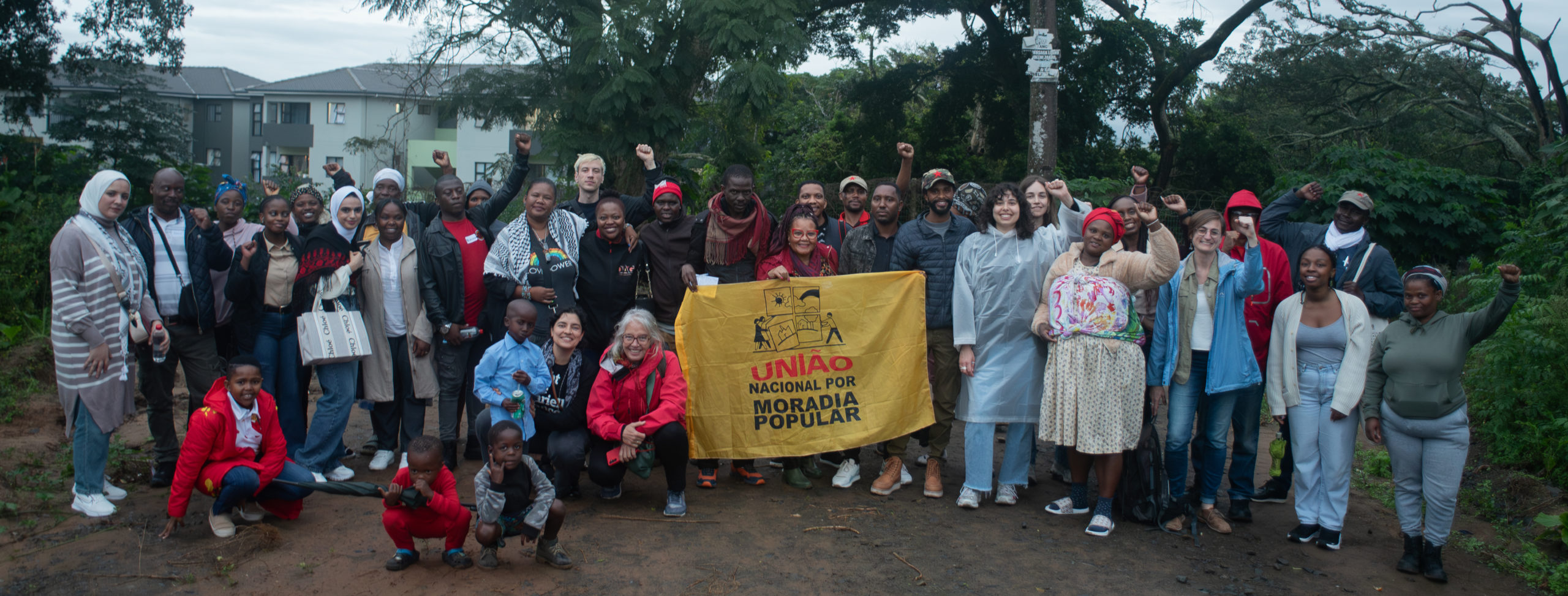1.- History, background and context
The Rio de Janeiro metropolitan region has a deficit of 300,000 housing units, of which 226,000 are required by families with household incomes of up to five minimum wages (US$ 360 per month). This calculation includes both quantitative demand (homeless families, families living with relatives, and those paying rent which absorbs more than 30% of their income), and the qualitative deficit (precariously built homes and those lacking urban infrastructure) (source: IPPUR).
This population sector has historically resolved its housing needs through its own means, without public or private finance, technical assistance, secure land tenure, or urban infrastructure (or with clandestine infrastructure). Such homes make up the favelas and irregular plots which appeared over the past 60 years in the city, and which are home to at least 30% of the population. Despite innumerable positive aspects (cultural, human, etc.), such communities present serious physical and socio-economic deficiencies.
After decades of struggle, urbanization of the favelas is now gradually accepted by society, and progressively implemented by the public authorities, albeit slowly and oriented by charitable visions and motivated by electoral interests.
In reference to the housing unit, there are no finance programs for reconstruction of precarious homes in the favelas or for production of new housing for the homeless.
The Foundation project addresses this unmet need and works in both the reconstruction of precarious housing in favelas and new housing construction on lands acquired for this purpose.
The process began in 1993 with an exchange that took place with the Uruguayan cooperatives. Technical support personnel and leaders from both countries participated in the exchange. In 1994-1995, funds were sought for three pilot cooperatives, and construction of 90 units began in 1996. These units were concluded in 1998. No new housing construction was begun in 1998-1999 because the only existing funds were those from the loans which were insufficient. Attempts were made to capitalize those funds, and new financial sources were sought. In 2000 the fund contracted 67 new units (3 complexes). Training was imparted and construction began in 2001, and an additional 80 units would be contracted in 2002.
2.-Objectives, strategies and scope
Objectives of the project:
- Develop the solidarity and citizen conscience of the citys poor population through education and cooperative practice, broadening the exercise of their rights.
- Improve the habitat situation of these families.
- Elevate their employment and income level, strengthening the solidarity economy.
- Become a reference to support the struggle for the design and implementation of a public policy with financial mechanisms that address the poor population, and which includes popular participation and control in its execution.
Strategic criteria:
- Contribute to overcome personal and/or family social and economic problems (such as alcoholism, unemployment, etc.).
- Identify and train leaders.
- Value womens role, overcoming discriminations and favoring equitable gender relations.
All of the five cooperatives supported are urban, three located in central areas and two in city outskirts. Two of these cooperatives are located in favelas; one reconstructed all the existing units, and the other only the at-risk units dispersed throughout the community. Two were implemented on empty lands within the city, purchased by the cooperative members who lived in rental housing or with relatives, and the fifth cooperative was implanted in an open area within a popular housing complex, and included families living there as tenants.
The model of popular cooperative housing production through participative management and mutual aid is innovative in the city of Rio de Janeiro. Another innovative characteristic is the existence of a line of credit which allows access to the most poor, due to its financial design (primarily due to existing subsidies) which is administrated by an NGO and has the participation of the beneficiary population through its representatives in a management council.
3.- Actors involved and their roles
- The population organized in cooperatives is responsible for the management or co-management of the process (together with the Foundation, with greater or lesser autonomy according to the level of internal organization). The beneficiary population also contributes time to housing construction (17 hours per week per family).
- The Foundation participates in project co-management and/or in advisory in social, legal, administrative and construction matters, and is also responsible for receiving resources and administrating the Revolving Fund.
- International cooperation donates resources.
- The municipal and state governments support through cession of lands, tenure regularization, and infrastructure implementation.
- And finally, the base groups linked to churches and social movements support the mobilization and organization of the families.
4.- Project components
Land: It is Fund policy to not finance land purchase, both because it would absorb a large amount of resources, and because through this strategy it intends to activate governmental responsibility for this component. With access to land being extremely difficult, in an exceptional case one of the cooperatives obtained a loan for this purpose. In reference to the others, one purchased the land financed under special conditions by the local church; another already occupied the land with precarious shacks and was able to regularize tenure. Only two of the cooperatives had access to land and/or to tenure regularization of the land they already occupied, through municipal government participation.
Housing: the homes are delivered fully completed with living area, two bedrooms, kitchen and bathroom, with a total area between 42 and 48 m2. In one cooperative, the families opted for a larger unit, 60 m2, with the finishing elements left for the families to complete (paint, etc.). The cost was thus comparable to the final cost of the fully finished units of 42-48 meters.
Architectural types vary among the projects, with each elaborated according to the physical conditions and group preferences. Settlement densities and plot sizes are directly related to the proximities to the citys downtown; land cost is cheaper as distance from downtown increases. The more central communities therefore generate vertical occupation, which may imply each unit being distributed in two floors or apartment-type vertical structures. The cooperative located farthest from downtown were able to build one-floor units and even allow room for future horizontal expansions, thanks to the larger plots. Such one-floor construction requires a simpler structural system and therefore is less expensive. The projects always reserve an open area for community interaction, and when possible a community center is built or space is reserved for that purpose.
Social: Given the inexistence of a social housing movement at the regional level, the groups which emerged in this process did so in response to their immediate and specific demand for housing, with little or no prior organizational level. Two of the cooperatives were supported by local groups (linked to social base organizations of the Catholic Church) for their formation and structure. Another emerged from a cooperative which had already concluded its housing construction process, and the other two were formed through the struggle for access to land.
Once the land and financial resources were secured, initial training of cooperative members was held. This phase addressed the cooperative spirit and its instruments, which include their representations (leadership and commissions), with their required functions, responsibilities and skills, followed by a process of election of members.
In addition to the directorship, responsible for external representation and internal coordination of tasks, two commissions were established. The construction works commission is responsible for organization of construction workers including the mutual aid (mutiro) contribution of the beneficiary families, the purchase and administration of materials, etc. The mobilization commission is responsible to supervise and coordinate the social activities (control of cooperative member hours, and support for social needs, addressing such problems as unemployment, alcoholism, domestic violence, etc.).
Meetings and assemblies are held throughout the development of the activities to evaluate and plan the work, thereby developing a process which brings together participative democracy and direct democracy mechanisms.
Project objectives include the conquest of autonomy and full self-management of these groups. This objective is pursued through the creation of instruments, channels, and training that facilitate increasing participation of cooperative members in all stages of the process. Given the characteristic of being groups in formation, and given the insufficient social work undertaken by the Foundation (see point 7 of this document), the level of organization, mobilization, and subsequent autonomy reached by the first three cooperatives was limited. Much of the social work required was left incomplete, in quantitative and qualitative terms.
Based on the accumulated experience, the project revalued the importance and strategies of its social intervention. Research was also carried out to collect data on existing gender relations, which also contributed to redefinition of the social strategies, with the intention to obtain improved density and effectiveness.
In economic terms, the following four areas were strengthened :
- The improved housing conditions produce subsequent improvement in the quality of life of the worker (better rest, family environment, and nutrition thanks to the improved salaries obtained for reasons outlined below). This improved quality of life has subsequent positive effects on these workers professional performance, which will very likely result in the medium or long term in improved salaries.
- In three of the five cooperatives, a large number of participants had been living in rental housing. The loan payments of these families to the Revolving Fund are equivalent to between one-third and one-fourth of their former rent payments (an average of between US$60 and 80 for a loan between US$20 and 25). These families previously spent around 35% of their family incomes on their housing, and now spend only around 10%.
- The training and practice acquired as part of the mutual aid element of the housing process generate the possibility to obtain professional employment in the construction industry for many men who were previously unskilled in this area.
- As an additional fruit of the union and solidarity process, women from two of the three cooperatives from the first phase implemented income-generation activities (group kitchens for the production and sale of meals).
5.- Primary instruments used
In relation to socio-organizational aspects, we have already mentioned: the Mixed Housing Cooperatives; mobilization and construction works commissions; deliberative assemblies; initial training concentrated in the families, which is the only activity carried out during the trainings two to three months duration; on-going training during the entire process; training and development plan for the identified leadership; linkage of these leaders and of the cooperatives with other actors and experiences; and permanent and transparent information circulation, in particular in relation to financial issues.
In reference to the financial instruments, the beneficiary families, which may have an income equivalent to up to five times the minimum wage, receive an eight-year loan with simple interest rates of between 0 and 3%. Note that interest rates on bank loans in Brazil can reach 100% per year, with housing interest rates charged by a public bank for the population earning up to five minimum wages at around 6 and 8% per year (composite yield).
The loan is used to cover the cost of the construction materials used, tools, the bricklayers installations, and the small amount of specialized labor which is contracted out. The technical assistance provided by the Foundation is free-of-charge. In current values, these 46 m2 housing units are produced through a loan of approximately US$2,200. As already noted, this requires a loan payment of between US$20 and 25 (10% of family income).
In reference to legal instruments, the groups are regularized as Housing and Mixed Cooperatives. Being mixed cooperatives means they can also market products and/or services through the development of income-generation units, fulfilling an additional project objective.
Contracts are signed between the Foundation, as manager of the Revolving Fund, and the cooperative, which in turn signs a contract with each cooperative member. Also noteworthy in reference to legal instruments is the elaboration of an internal regimen for the housing unit construction process (stipulating labor hours, work schedules, responsibilities, etc.), and this regimen is discussed and approved by the assembly.
6. Achievements and main lessons learned
The impacts on the participants are visible in terms of the increased human dignity, with elevated confidence and self-esteem and pride in the group to which each family belongs. The improved professional and salary conditions and improved material conditions have already been noted. The linkages built with other groups and actors help to broaden the horizons of the participants, and the projects also have important positive impacts on education in citizenship and other areas.
Another important achievement refers to the construction and architectural quality of the interventions, at a relatively low final cost. The culture of housing production in Brazil is primarily that of precarious construction-architecture-urbanization, which hides a discriminatory posture which allows inferior models for the poor. This culture also hides a limited and short-sighted economic vision in cost/ benefit terms. Slightly increased investment in construction enormously improves the useful lifetime of these units.
Following are three primary obstacles faced:
- The first refers to the involvement of the government, which is a strategic element of the project objectives. Many linkages were developed but none produced results. Some of the reasons for this are: changes of governmental regimes in power or even of actors within a same government; lack of a culture of construction and implementation of sustainable and universal political policies; the self-reference of the political power which sees itself as the sole legitimate actor in the public and social sphere and deems unnecessary the construction of alliances to complement and broaden its interventions; the utilitarian vision in relation to the poor population which it sees not as a sector with rights and self-determination, but as an object of charity and electoral utility.
- Another set of obstacles refers to the fact that there is no structured, organic, and broad social movement in the field of housing in the region. In the case we present, there is a need to perform other roles: mobilization, networking, training, etc. We noted the insufficient social work carried out by the Foundation in the projects first phase. It is also important to point out the leadership question, where individualism and authoritarianism are frequently reproduced.
- Finally, a last universe of problems refers to loan repayment. Here we observe a direct relation between maturity level and internal organization, the democratic posture of the leadership, and the level of incompliance, which is low in the most organized cooperative, moderate in the moderately-structured cooperative, and high in one community where, in addition to problems faced with the leadership, there are serious issues of drug trafficking, which is in itself a dramatic and structural obstacle for any action which seeks the organization of the poor population in the city of Rio de Janeiro.
7.- Key words
Brazil, Rio de Janeiro, cooperative, revolving fund, co-management, mutual aid, construction-architectural quality, low cost, reconstruction in favelas, new complexes, public policies.
8.- Contacts
Fundacin Centro de Defensa de los Derechos Humanos Bento Rubio
Rio de Janeiro, Brazil
Tel: (55-21) 2623406
Fax: (55-21) 5330837
E-mail: ricardo@bento.org.br




